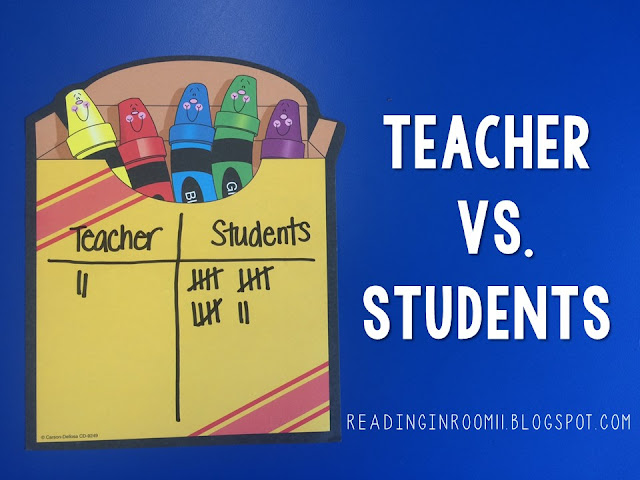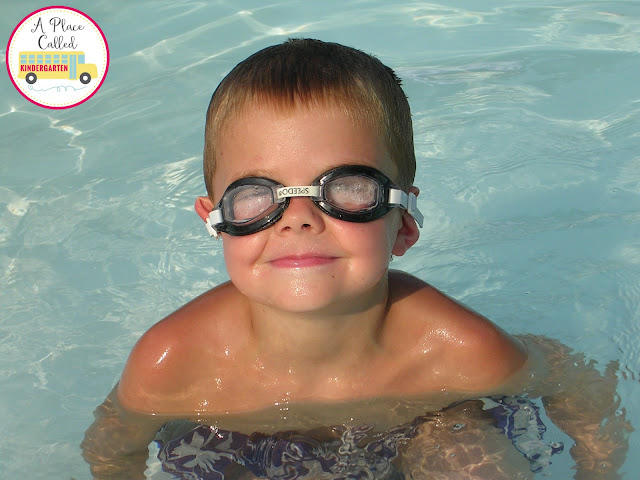Google Calendar
You may be scratching your head at how a calendar could be used for literacy instruction, but how about using it to map out your literacy instruction with colleagues. If you share your calendar or use the same calendar as a team, you can easily coordinate your resources, keep everyone on the same page for the grading period, and better plan your meetings. You can also use Calendar to manage library checkout/checkin for your classroom library. Simply have your students type in the title they're borrowing on the calendar. It may not ensure the book gets returned, but it may make tracking them easier.
Google Forms
I LOVE Google Forms. You can do so many things with forms. For one, you can take anecdotal records by student and have all the data populate into a spreadsheet for you. That means you have an ongoing collection of all of your notes which we know is helpful in documentation growth.You can also use forms for instruction with exit tickets, quick quizzes, to record answers to task cards you might use, to take class polls about reading materials, or to learn about your students' interests. Again, the data all goes into your spreadsheet for an easy place to see what your students know or don't know.
Many of us use reading logs to monitor independent reading. With Google Forms, you can have students complete a form each day to monitor their own progress. Need to do a spot check? Just print the spreadsheet and hold a conference.
Google Sites
You might be wondering how Google Sites could help you. It may even seem like that would be way to much to take on, but we know there is a great connection between reading and writing, right? How about creating a Google Site as your students are researching animals. Have them outline what they learn and add details as they read/learn. They can insert photos, and you can even share the link to the creation with parents later. Worried about confidentiality? No problem. You can set the privacy on the sites just like you can with blogger to allow viewing by the public or just those who have the URL.Another option of Google Sites is to make a class portfolio. Each student can have a page where you insert photos of the work they've created. How neat would that be to show at conference time?
Google Slides
Google Slides works just like Powerpoint. You can easy to drop video clips into presentations, embed a Google form into it, and add links to materials in your Google drive. Google Slides doesn't have all the bells and whistles that Powerpoint has, but it is FREE.
Google Docs
Certainly, one HUGE benefit to Google Docs is sharing. As a team, you can collaborate on plans and share ideas. It's easy to include links you want to use, materials your division has for you, Youtube links, and more. If you use Google Calendar, you can put the plan links into you calendar. Don't finish a lesson or find students need reteaching? No problem...just slide to the next day in your calendar.One idea I've enjoyed is using a doc as a dialogue journals. Students can record their thoughts about their reading (quotes and their reflections), discuss with their literature circle without talking outloud, write quick writes on a a specific topic you're studying, and as teachers, we can easily work with students on revisions as we conference too. Add in Google Classroom, and it makes turning in and returning work easy too.
Google Sheets
Google sheets are perfect for RTI. We can track our students' data and easily print/share it with our administration. I love that you can color code your sheet to make it easy to see deficit areas too.Google Hangout
Google Hangout works like Skype, so you could use it for guest presenters who may not be able to come to you. You might even use it discuss with colleagues in the next room or connect up with other classrooms to have virtual book clubs. Imagine how fun it'd be to have virtual pen pals in another classroom and actually SEE them receive your letters. Just use your imagination, and you're sure to come up with great ways to use this tool.
Google Classroom
Google Classroom pulls it all together. It is an integration tool, and I LOVE IT! I used it last year as a set up in my classroom. We have one-to-one laptops, and my kids just knew to log in and get started. As they began, it gave me time to work one-on-one with those who needed assistance. I also love that students can turn in their work and receive grades through Google Classroom.
Certainly, there are a lot of great posts out about Google Apps with more detail as well as tutorials offered through Google, but I hope this gives you a few literacy options to explore.











































